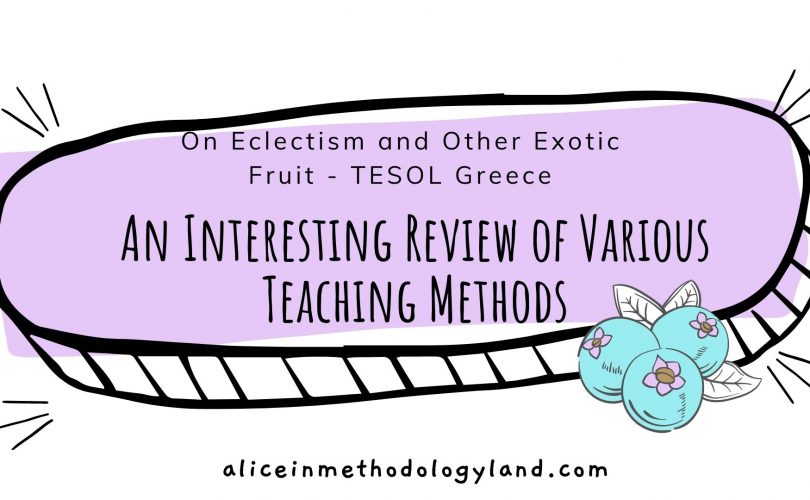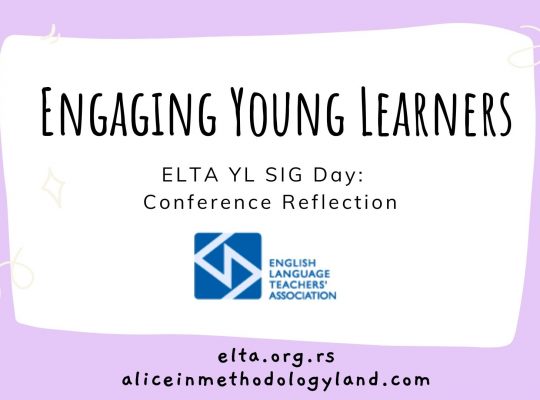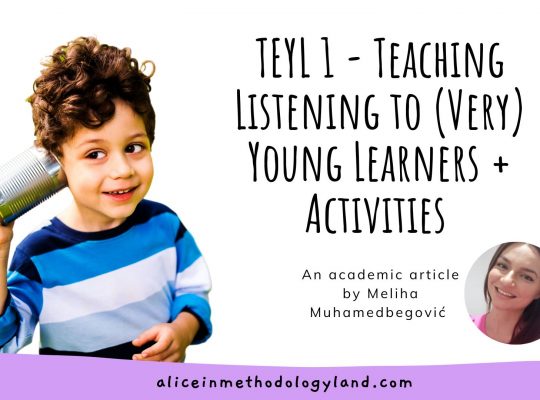We are constantly trying to improve our instruction and to add something fresh and new to our classroom. Unfortunately, sometimes we end up going in circles and pushing specific teaching innovations upon ourselves without having a clear idea where they will take us. There is no such thing as best teaching methods, but this review is very inspiring, and it shows bits and pieces from multiple teaching methods.
What would happen if we stopped reinventing the wheel and tried to reimagine it? What would happen if we stopped reinventing teaching and just started to reimagine it in the current time and age and adapt and improve what we already know? Whit this goal the 27th TESOL conference in the Northern Macedonia, Greece, Thessaloniki, decided to give itself a hard task to reinvent the way we see ELT. Let’s see what did the plenary speakers and the workshop facilitators have to say!
Reimagining Classrooms as Research

Leo Selivan – On Eclectism and Other Exotic Fruit
Leo’s presentation was engaging and highly interactive. He led us through the ELT supermarket, a metaphor developed by Gabrielatos (2000), and presented the topic of informed or principled eclectism.
Then he introduced eclecticism as a final product of combining teaching theories and methods while pointing out that every teacher develops their own eclectic instruction. Finally, he compared every method he presented with a certain exotic fruit – we played a guessing game for each method. We also received a worksheet where we needed to check all the activities we conduct in our classroom, and we were invited to share if we knew what the method behind those activities was.
Grammar translation method – Something I believe we should all forget forever
Benefits – Requires greater cognitive depth, forces attention, promotes noticing grammar structures.
Activities – Translating a literary passage, finding antonyms or synonyms, memorizing a list of words.
Fruit – Lemon – despite being groundbreaking at the time of creation, this method sometimes leaves a bitter taste in our mouth.
Audio-lingual method is definitely not a best teaching method, but it is certanly memorable
Benefits – Memorization as an effective L2 strategy.
Activities – Repeating sentence after the teacher, memorizing a dialogue, asking students to self-correct.
Fruit – Pomegranate – It takes a lot of effort to separate the tiny berries inside, and you get very little fruit.
You can see an interesting and fun example of the audio-lingual method in a famous movie, Love.
‘Designer methods’ – suggestopedia – reimagined as mindfulness
Benefits – Peripheral learning, learning by observation.
Activities – Reading stories out loud, using humor.
Fruit – Banana – it opens to show the beautiful fruit inside!
The video below is recorded in the Diane-Larsen Freeman professional development program a long time ago, but we must admit that it is still relevant!
Total Physical Response / TPR
Benefits – Embodied cognition, teaching chunks, ability to communicate.
Activities – Using gestures to explain words, using games like ‘Simon says.’
Fruit – Grapes – a lot of tiny grapes, combining into one big, juicy grape. Every grape is important!
The example below is NSFW and presents a hilarious way to use TPR! Again, don’t play this at work! ?
Communicative teaching method
Benefits – The teacher is the facilitator, less frontal teaching, focuses on fluency.
Activities – Giving instructions in English, using board games and role-plays, inferring the meaning of new words from context.
Fruit – Watermelon – simply refreshing!
Dogme ELT – Teaching unplugged
Benefits – Materials are light. The instruction is conversation-driven. It focuses on emergent language.
Activities – Free conversation topics, discussion, photo description.
Fruit – Dragon fruit – it looks amazing, but it doesn’t have a specific taste.
Post-method era
Benefits – A reflection on the teaching practice and improving the instruction – teacher autonomy.
Activities – Leading a blog or a teaching/learning journal to reflect on the learning/teaching process.
Fruit – I can’t remember the fruit!
To conclude our review of best teaching methods
Leo’s presentation was a great refresher of various teaching methods, and I must admit that I was pretty pleased with myself that I guessed every method he asked us about. However, to conclude, we must emphasize that eclectism in teaching is crucial since one method is not always effective, and there is no such thing as the best teaching method.
What are your preferred teaching methods? How varied is your instruction? Are there some methods you dislike? Write in the comments or via the contact page!
References for further study
Suggestopedia, Silent way, and the Communicative Approach – Language Teaching Methods explores various methodologies of English language teaching. This was a joint project by Diane Larsen-Freeman and the U.S. Information Agency and was produced in 1990. The audio-lingual method, also created in the same project.
Larsen-Freeman, D. (1986). Techniques and Principles in Language Teaching. Oxford University Press.

Click here to explore my store where 99% of materials are forever free!
All the materials except lesson plans and 30+ page interactive activity books will be free FOREVER! Why? Because sharing is caring, and 2020 hasn’t been kind to all of us. Please consider donating so I can keep making FREE materials for everyone and keep my website open for all of you.
Don’t forget to leave a review when you download materials! It’s just a minute of your time, and it means a lot to me.
P.S. The store and the freebie library are not the same thing – the freebie library has some extra materials like conference presentations and webinar recordings which are not available in the store ✨
The subscription link for the store is below my bio in every post. ?








